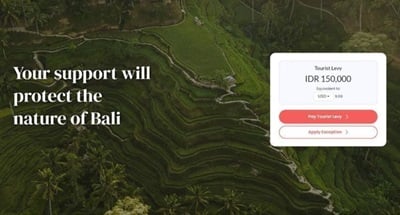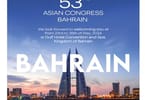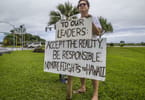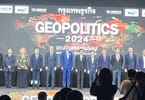Who wonders that a kind of ‘discount’ mentality has demanded its tribute, as the flashback shows: Mass Tourism prevails and determines local life and culture, yet the final bill is high: Negative impacts outweigh positive effects, the travel destination is perceived critically, the image is getting from bad to worse. ‘Overtourism’ is the term that afflicts our digestion, both as hosts and visitors. These prefer to go elsewhere, leaving behind ‘lost places’. Finally, locals may reflect over graffiti-sprayed hotel ruins. At last, their morbidity may inspire the imagination of visitors sensitized to the ephemeral.
Attempts to reinvigorate Tourism by means of enhanced (cross-) cooperation in terms of promoting the cultural and architectural heritage are mostly too half-hearted. Sustainability comes on tip-toes or is paid lip-service only, at a time when it needs stringent planning, coherent hands-on action, and the understanding that sustainability costs money.
In spite of numerous efforts to strengthen the political weight of Travel & Tourism, we have not achieved a recognized peer-to-peer level with powerful industries like the automotive, machinery or energy – not to mention the confusion of different eco-brands to demonstrate the same: the ecological commitment to our travel destination. Too fragmented is the Tourism industry, too divergent are our individual interests, priorities and entailed involvements in day-to-day policies.
What is left is the lingering suspicion that despite strong individual efforts towards implementing sustainability criteria and regardless of persistent warnings and demands expressed by so many professionals, little communal essence only seems to have been achieved by so few so late.
Tourism and Hospitality – a sector that against all odds has been perceived resilient and socially, economically and ecologically relevant, faces just now, in the wake of the global pandemic, the bitter reality of its weakness and declared systemic irrelevance. What a sobering outcome!
Do we have a structural problem, a blocked mindset, motivation deficiencies, too much reasoning but no strategy and no action, or too much headless activism in dealing with a toxic crisis cocktail, including pandemic, climate change, structural change, energy change, European cohesion, political extremism, demography and refugees? – Or is it merely a communication deficit? In fact, this would tell its own tale about our praised age of e-communication and multitasking.
Since Covid-19 has strongly imposed its restrictive laws upon society, virtual government summits and business circles have shown themselves very busy to find technical ways to propel post-COVID Tourism. It is true: Before the pandemic, there were so many top-events with physical presence: political summits, conferences and prestigious round-tables – with the world’s peace industry and its equally prestigious organizations largely absent, though. And now, with massive social notches of COVID-19, coinciding with climate change-induced calamities and their worst effects on people and infrastructure – is there anything different? Too sad to have found Travel & Tourism underexposed again, lost in distancing, locked down – and knocked out to a degree that even international terrorism in its heyday could never have accomplished.
Meanwhile, summer came, temperature curves rose, and COVID-incidence curves fell. Stockpiled hopes of recuperation and relaxation were released to pave the way for better prospects, and more so: for an increasing understanding that, first, there is little impact of government appeals, if people are unwilling or don’t understand their sense; second, Travel & Tourism should not aspire to return to pre-COVID conditions, even if felt like a dimmed reminiscence of the good ‘old’ times.
Done a Lot – Without Prevailing, Though
Nonetheless, there must be something to it: Having organized many Tourism initiatives over the past thirty years and more, we are proud to be part of those ‘pioneer’ characters that have ‘opened the gates’:
We have shown our utmost aspiration and commitment to jointly build up and practice Sustainable Tourism, firmly laid down in business guidelines and government statutes. We have done a lot to innovate tourism infrastructure and update communication technology, improve services and enhance travel itineraries, upgrade park and beach equipment, to train managers and staffers, and to identify new sports and leisure opportunities.
At last, and in compliance with government regulations to combat COVID, we kept watching entry restriction updates and requirements to cleanliness and safety. We were fast to brush up our locations, equipment and working conditions to protect staff and customers alike from the pandemic, and we modernized our technical equipment to save energy and produce less waste.
We already started to set new trends as a consequence of Covid-19, like shifting away from seasonal to year-round vacation getaways, enhancing last-minute travel and welcoming ‘pod travel’ groups (of likeminded friends), accepting short-term bookings to test potential remote working locations (‘home-office in the sun’), offering ‘hybrid’ travel packages to link up real and digital events for working & vacation purposes (‘workation’), creating bucket list travel destinations and ‘homey’ accommodation. Our efforts have been real, sometimes even artistic, and arguably crazy!
Why could we not prevail in public or non-public cross-sector government circles? In order to visibly participating in joint decisions taken not just for Tourism, but to all of us, since we are all affected? Why have Tourism destination leaders and managers largely failed to make destinations shine as an integral part of an all-over ‘place management’? Why has Travel & Tourism, apart from being an industry, hardly been recognized as the equivalent of a whole set of communication tools that is capable to enhance the reputation of the country, region, or city in its totality? — Why have insightful leaders, managers and stakeholders in Travel & Tourism never mobilized all Tourism and hospitality staffers to cry out their discontent about a deeply felt discriminatory ‘systemic irrelevance’ at mighty demonstrations to government seats and parliaments?
For Travel & Tourism it is a drama, yet a wake-up call, too. It strongly appeals to our shared responsibility and the ensuing tasks within the complex socio-economic and environmental system of the travel destination.
For local people it is their place — their ‘community’, be it a city, region or country, for visitors it’s their ‘destination’, with usually different expectations and perceptions. However, affiliation and purpose are the (w)holistic aspects to create a ‘corporate’ identity, or ‘personality’, of the travel destination as a ‘system’: a place to live, to work, to invest, and to travel.
Corporate identity is based upon a holistic understanding within the system, be it a destination or company. This means that its total performance as a unit is a good deal more relevant than merely the sum of the individual outcomes accomplished by members (= a car is more than the total of its spare-parts). This proposition holds for inside the system. Outside the system, however, say, in view of the cultural variety of a whole region, it goes the other way round: The diverse parts of this region are more relevant in their performance than the whole.
This explains in a simple way a development we perceive as a paradox: Subsequently, humanity is diverging in two directions: on the one hand, to the benefit of a more efficient performance, it tends toward a worldwide structure of communication networks (the ambiguous ‘global village’), on the other hand, defending individual identities, the trend goes toward smaller cultural fragments that won’t deny their differentness.
This trend strongly affects our marketing and promotion. The challenge is to switch from linear to complex systems, which is similar to the change from analogous to digital management techniques. Regarding visitor management, it’s about breaking down an optional number of potential visitors, as different as they are, to obtain specifically defined social groups, targeted in terms of lifestyle, profession, location, scene, class, habit, predilection, age, sex, etc. This requires to differentiate and diversify our supply, in view of arranging customer-tailored tourism offers and practicing a more personalized approach to our potential visitors.
In doing so, we should be really conscious of what kind of people we do not want to receive, yet more so, what kind of visitors we would prefer to welcome, as they are supposed to make the perfect fit to our offer – and our own mindset – as our guests we chose to make them happy, come back again, stay longer, and recommend us as likeminded hosts. There is an idea coming up, exaggerated as it may be, yet suggesting itself – the idea of an attitude we usually would adopt to choose long-term tenants.
The Individual Visitor – Our Guest
- In times of crises, the meaning of ‘individual’ may gradually change, from suspected ‘individualism’ to real and true peer-to-peer relationships amongst individuals.
- Travel & Tourism as a service business is based on stakeholders’ integrity and mutual trust. The better these requirements are met, the more joyful relations will unfold and the better ‘paid hospitality’ works.
- As Travel & Tourism key-stakeholders we will make joint efforts to re-prioritize issues, in terms of quality (vs. quantity), empathy (vs. egotism), tailor-made offers (vs. lump-sum packages), personalized visitor-management (vs. mass-tourism channeling), target-groups that are really desired and addressed, accordingly (vs. ‘everyone is welcome’), cross-cooperation (cross-sector, cross-industry), cleanliness (anti-littering initiatives and waste-management), security and safety (secure/accountable rules and policies, safe and healthy environments), enhanced services worth the money – and a very much different idea of energy and mobility – toward renewable energy and e-… mobility.
The better concretized and personalized desired visitors are being determined and invited, the more rewarding the return on investment, the more pleasant the general ambience on the place, and the more peaceful the location.
Strategic Options to Measure Success
An irritating factor has always been the way how we measure business success in Tourism: Usually, our economic activities are determined largely by statistical quantities like the number of tourist arrivals and overnights, rather than by means of a system that displays product and service quality indicators. These actually are the ones to determine quantifiable success. Since it is easier to handle, we still allow economies of scale to outdo economies of scope. While cooperation even within the Tourism sector still leaves much to be desired, competition is fought over the price, rather than over ‘excellence’.
This practice has been disastrous to quality of product and service, and turned out economically fatal in many cases, without even Covid-19 used as a scapegoat.
Growth of quality actually means going ‘systemic’, in order to improve product, service and communication, to diversify within the chosen specialty, with a focus on customers’ benefits. After all, it’s customers’ enthusiasm (!) — not just satisfaction — that is worth the efforts to obtain long-term gains and reach sustainability. Identifying and determining our special target groups and their problems and needs will be key, prior to analyzing (anyhow mostly predisposed) strengths, weaknesses, opportunities and threats (SWOT) of our Tourism product.
The keyword is ‘specialization’ as natural processes show us, from which smart brainworkers have derived captivating theories to manage complexity decades ago already:
There is, for instance, Paul R. Niven, Founder and President Senalosa Group, Inc., a management consultant specialized in strategy execution systems. Niven cascaded the ‘Balanced Scorecard’, an instrument developed by Robert Kaplan and David Norton in the 1990s, to measure both business and public sector/NGO success in four distinct, yet related areas: customer, internal processes, employee learning and growth, and financial.
Almost simultaneously, Frederic Vester, a biochemist and specialist in environmental matters, excelled in creating an encompassing management and planning tool for complex systems, the ‘Sensitivity Model Prof. Vester’. In his model, Vester defends sustainability as the capability of ‘man-made’ systems to use nature’s example of self-regulation and flexibility, in order to guarantee viability: Instead of relying on conventional ‘linear’ planning procedures to tackle singular problems separately, Vester keeps the overview of the system’s context: His analysis of the problem pivots the “Art of Interconnected Thinking”: interdependence and integration of other areas of life that are interconnected with the system scrutinized, by avoiding to be lost in meticulous details, and using instead a clear number of determining factors. Vester gives more than just a chance to ‘fuzzy logic’, a theory that clears a space between ‘completely right’ and ‘entirely wrong’ – “in order to precisely catch non-precise patterns” (after scientist Lotfi Zadeh).
Based on the principles of biology and evolutionary theory, particularly on the natural law on the most effective use of forces, Wolfgang Mewes founded the ‘shortfall concentrated strategy’ (EKS Engpasskonzentrierte Strategie) and defined its four principles:
- Concentrate on resources and strengthen assets
- Dissolve shortfall or bottleneck
- Prioritize customer benefits rather than one’s own profits
- Prioritize intangible/non-material rather than tangible/material assets.
Applying the ‘shortfall concentrated strategy’ includes three components of measuring entrepreneurial success ‘the other way’:
- The shortfall (or bottleneck) concentrated strategy serves as a reliable ‘scout’ to obtain best results, in terms of specialization and identification of niche products and services. These niches may be small, but all the more rewarding if extensively addressed and marketed. The more ‘pointed’, or concentrated the chosen specialization is, the earlier this strategy may elevate a Tourism destination to market leadership and exclusiveness.
In order to optimize a mission dedicated to sustainable Tourism development and, with a relatively limited number of key-data, obtain a solid Unique Marketing Proposition (UMP) for the customer, this strategy is recommended for long-term project assignments. We should keep in mind to become – and remain – the best problem-solving Tourism company or Destination Management Organization (DMO) — not for anyone, but for a few carefully selected special target groups.
- Instead of simply adding up the different elements of our services plus the profit margin to bundle a travel package, it is better to make our calculation ‘systemic’, or ‘dynamic’, based upon anticipating target-group specific cost-decreasing effects. Instead of statically estimating costs per offer plus profit, target groups’ demands and their readiness to pay a price are to be identified, followed by appropriate techniques to underbid the intended price level. The systemic calculation should always include an innovation, whose liquidity generated should be reinvested. Two steps are to be taken: first, to improve performance regarding the most effective innovation item, in order to trigger a chain reaction; second, to identify target-groups’ readiness to pay, and balance prospective supplementary costs and revenues. The goal of the systemic calculation is to improve customers’ benefits faster than competitors do.
- Balanced scores focus on the integration of non-tangible assets into a company’s tangible and monetary assets. Crucial impasses are to be anticipated. Balanced scores are based upon two innovations: first, inventive chemist Justus von Liebig’s findings on the evolutionary laws of living systems. Their development is not determined by a certain factor – e.g. financial assets –, but by the item most lacking, the so-called ‘minimum factor’; second, the challenge to the management is to identify the minimum factor and act accordingly, knowing that non-tangible assets play a crucial role. In doing so, all energies can be concentrated on the minimum factor, in order to identify customers’ priorities or solve their main problem, which in turn would automatically solve minor problems entailed. Balanced scores facilitate the change from linear to holistic thinking and acting.
It seems hard to decide which method to choose, they have a lot in common. Their main commonality is to help manage complex systems: All of them are dedicated to obtain best solutions to challenges – or problems – that an increasing degree of complexity will keep in stock, calling leaders and stakeholders to make the right decision in an environment that favors probability to certainty. As real sustainability starts at the point of energy, the beginning of it all, the smallest target group to envisage is to be found at the very origin – the individual person, the human being. All of us are affected by Covid-19 and climate change, and each one of us is required to do our utmost to prevent or contain the effects these calamities may entail. In doing so, each one of us – both as visitors and hosts – equally deserves mutual attention and support. This particularly holds for Travel & Tourism with its high leap of faith demanded by the special character of paid hospitality.
Tourism’s fragmented structure may be a hint to a logic that can only be determined as ‘fuzzy’: Regarded as an industry to create added value and generate income, Travel & Tourism is the mirror image of its socio-economic and environmental system. Taken as a ‘set of communication tools’ to enhance the reputation of the destination, Tourism apparently deserves more astuteness and balls from its leaders, to stand up to both the requirements ot its commercialized welcome culture and the ideals of their own mission and livelihood: to develop and maintain Sustainable Travel & Tourism.
Key-Issues to Obtain a Strong Foothold After the Pandemic
Short-/Mid-Term:
- Identify new sports and leisure opportunities;
- Shift away from seasonal to year-round vacation getaways;
- Enhance last-minute travel and welcome ‘pod travel’ groups (groups of friends);
- Accept short-term bookings, targeted to testing potential remote working locations;
- Offer ‘hybrid’ travel packages linking up real and digital events for combined working & vacation purposes;
- Create bucket list travel destinations and ‘homey’ accommodation.
Mid-/Long-Term:
- Build up Sustainable Tourism, deep-seated in business guidelines and mission statements;
- Improve services and enhance travel itineraries;
- Train managers and staffers continuously;
- Innovate tourism infrastructure, upgrade technical equipment, prioritize Renewable Energy, and reduce plastic and other waste;
- Pay attention to new megatrends, like:
– Customers’ ‘new yearnings to fellowship’, community, nature and culture;
– Enhanced connectivity, ‘neo-ecology’ and a shift of gender;
– Change from mere ‘hosts’ to ‘resonance managers’;
– Upgraded e-communication with ‘augmented reality’ gadgets;
- Check whether or not these trends …
– are worth the effort, or rather look like little more than seasonal fashion moods,
– include real or just intended added value,
– are compatible with proven hospitality principles,
… and take individual conclusions.
WHAT TO TAKE AWAY FROM THIS ARTICLE:
- We have done a lot to innovate tourism infrastructure and update communication technology, improve services and enhance travel itineraries, upgrade park and beach equipment, to train managers and staffers, and to identify new sports and leisure opportunities.
- Tourism and Hospitality – a sector that against all odds has been perceived resilient and socially, economically and ecologically relevant, faces just now, in the wake of the global pandemic, the bitter reality of its weakness and declared systemic irrelevance.
- Do we have a structural problem, a blocked mindset, motivation deficiencies, too much reasoning but no strategy and no action, or too much headless activism in dealing with a toxic crisis cocktail, including pandemic, climate change, structural change, energy change, European cohesion, political extremism, demography and refugees.























